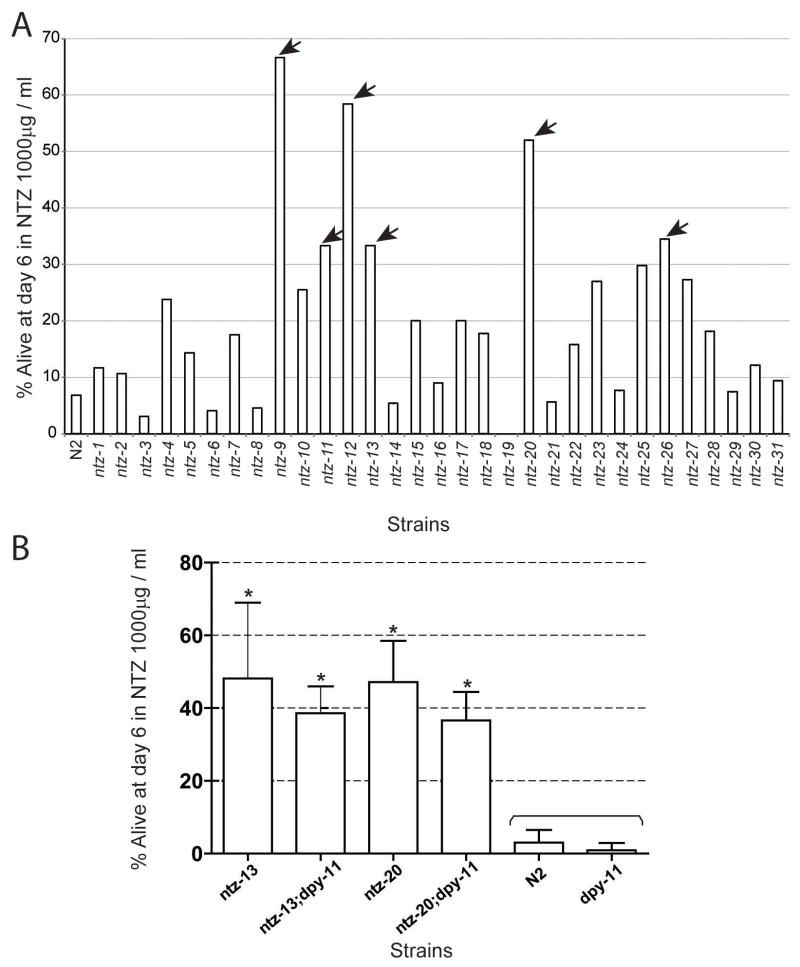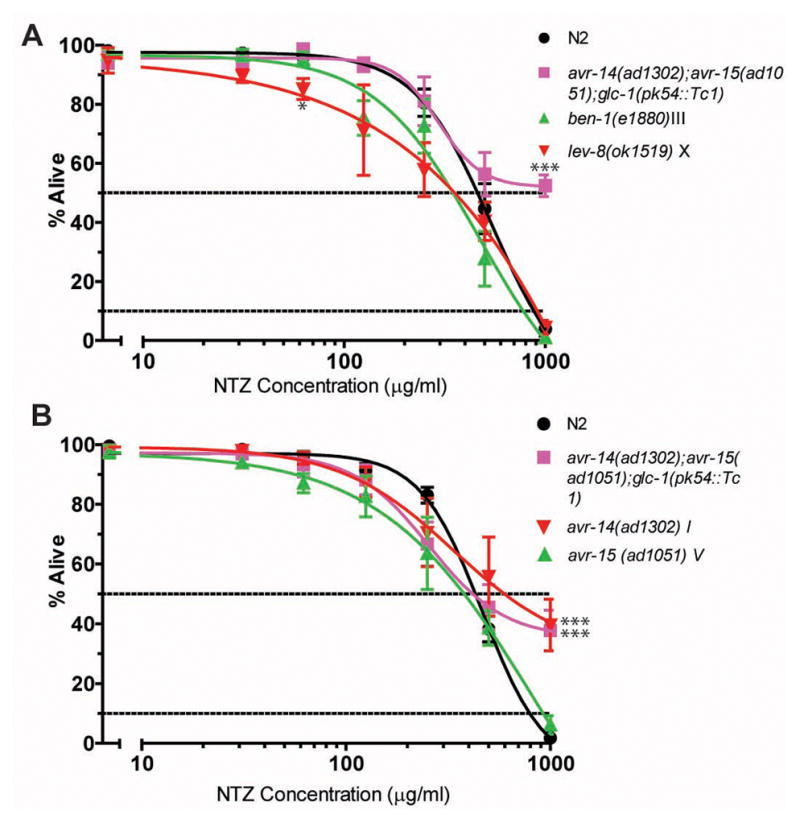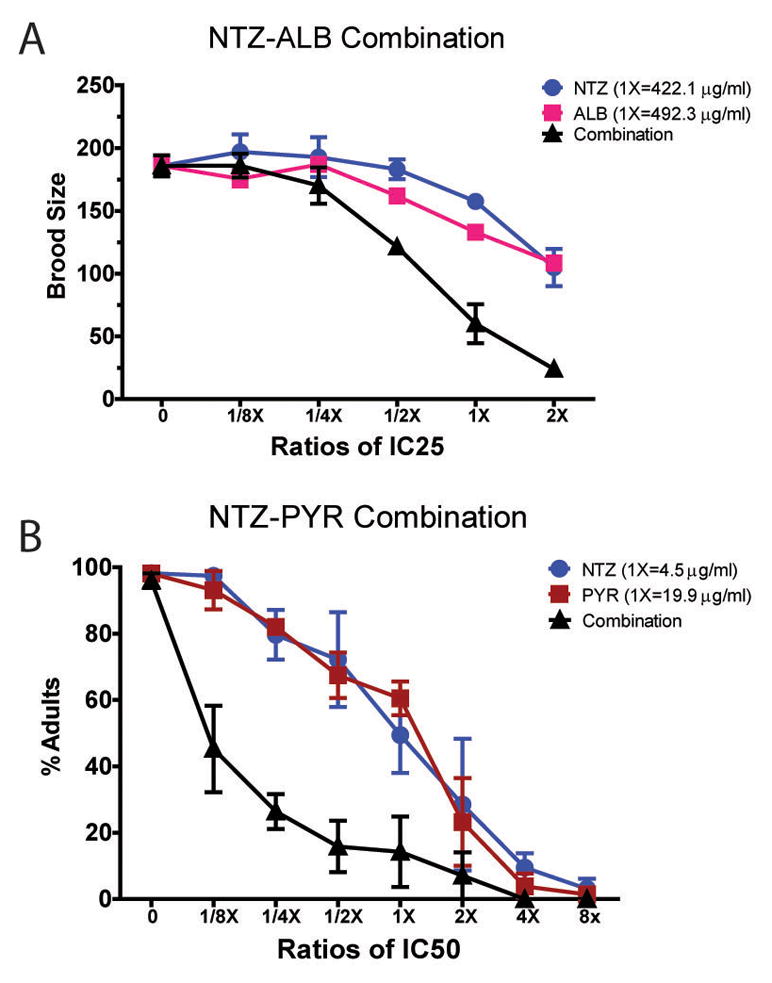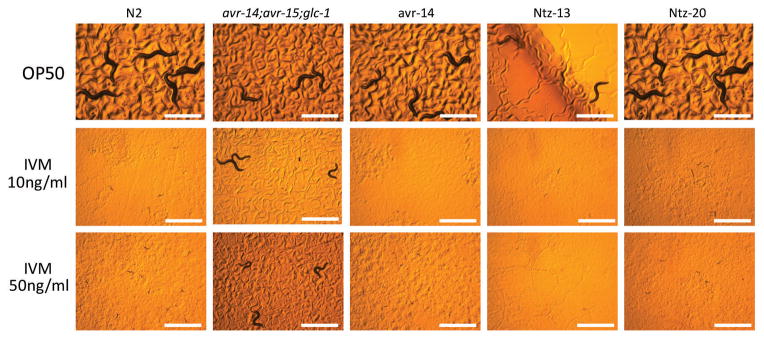This product is for research use only, not for human use. We do not sell to patients.
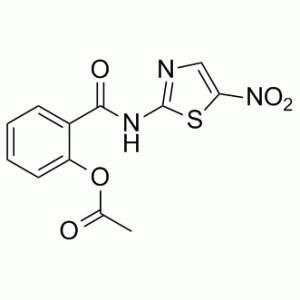
| Size | Price | Stock |
|---|---|---|
| 1g | $150 | In Stock |
| 2g | $200 | In Stock |
| 5g | $330 | In Stock |
Cat #: V2077 CAS #: 55981-09-4 Purity ≥ 98%
Description: Nitazoxanide (also known as NTZ; NSC 697855) is a synthetic nitrothiazolyl-salicylamide derivative and a broad spectrum antiprotozoal agent with IC50 for canine influenza virus ranges from 0.17 to 0.21 μM. It was approved for treating human protozoan infections. Nitazoxanide reduces parasite growth in cell culture by more than 90% with little evidence of drug-associated cytotoxicity. Nitazoxanide is a new thiazolide antiparasitic agent that shows excellent in vitro activity against a wide variety of protozoa and helminths. Nitazoxanide and its metabolite tizoxanide are more active in vitro than metronidazole against G. intestinalis, E. histolytica and T. vaginalis.
Publications Citing InvivoChem Products
Product Promise

- Physicochemical and Storage Information
- Protocol
- Related Biological Data
- Stock Solution Preparation
- Quality Control Documentation
| Molecular Weight (MW) | 307.28 |
|---|---|
| Molecular Formula | C12H9N3O5S |
| CAS No. | 55981-09-4 |
| Storage | -20℃ for 3 years in powder formr |
| -80℃ for 2 years in solvent | |
| Solubility In Vitro | DMSO: 62 mg/mL (201.8 mM)r |
| Water: <1 mg/mLr | |
| Ethanol: <1 mg/mL | |
| SMILES Code | CC(OC1=CC=CC=C1C(NC2=NC=C([N+]([O-])=O)S2)=O)=O |
| Synonyms | NSC-697855; NTZ; NSC 697855;NSC697855;Nitazoxanide, Alinia, Colufase, Daxon, Nitazoxamide Chemical Name: [2-[(5-nitro-1,3-thiazol-2-yl)carbamoyl]phenyl] acetate Exact Mass: 307.0263 |
| Protocol | In Vitro | In vitro activity: Nitazoxanide reduces parasite growth in cell culture by more than 90% with little evidence of drug-associated cytotoxicity. Nitazoxanide is a new thiazolide antiparasitic agent that shows excellent in vitro activity against a wide variety of protozoa and helminths. Nitazoxanide and its metabolite tizoxanide are more active in vitro than metronidazole against G. intestinalis, E. histolytica and T. vaginalis. Nitazoxanide exhibits potent inhibition of both HBV and HCV replication. Nitazoxanide potentiates the effect of subsequent treatment with Nitazoxanide plus IFN, but not Nitazoxanide plus 2'CmeC, in HCV replicon-containing cells. Nitazoxanide induces reductions in several HBV proteins (HBsAg, HBeAg, HBcAg) produced by 2.2.15 cells, but does not affect HBV RNA transcription. Nitazoxanide exhibits IC50, and IC90 values of 0.017 and 0.776 mg/mL respectively, against E. histolytica, 0.004 and 0.067 mg/mL against G. intestinalis, and 0.034 and 2.046 mg/mL against T. vaginalis. Nitazoxanide is more toxic than metronidazole and albendazole against E. histolytica. |
|---|---|---|
| In Vivo | Nitazoxanide is partially effective at reducing the parasite burden in a gnotobiotic piglet diarrhea model when given orally for 11 days at 250 mg/kg/day but not at 125 mg/kg/day. Nitazoxanide induces a drug-related diarrhea in piglets that might have influenced its therapeutic efficacy. | |
| Animal model | Gnotobiotic piglet diarrhea model | |
| Dosages | 50, 75 or 100 mg/kg/day | |
| Administration | Administered intragastrically by gavage |
| Solvent volume to be added | Mass (the weight of a compound) | |||
|---|---|---|---|---|
| Mother liquor concentration | 1mg | 5mg | 10mg | 20mg |
| 1mM | 3.2544 mL | 16.2718 mL | 32.5436 mL | 65.0872 mL |
| 5mM | 0.6509 mL | 3.2544 mL | 6.5087 mL | 13.0174 mL |
| 10mM | 0.3254 mL | 1.6272 mL | 3.2544 mL | 6.5087 mL |
| 20mM | 0.1627 mL | 0.8136 mL | 1.6272 mL | 3.2544 mL |
This equation is commonly abbreviated as: C1 V1 = C2 V2
- (1) Please be sure that the solution is clear before the addition of next solvent. Dissolution methods like vortex, ultrasound or warming and heat may be used to aid dissolving.
- (2) Be sure to add the solvent(s) in order.





































